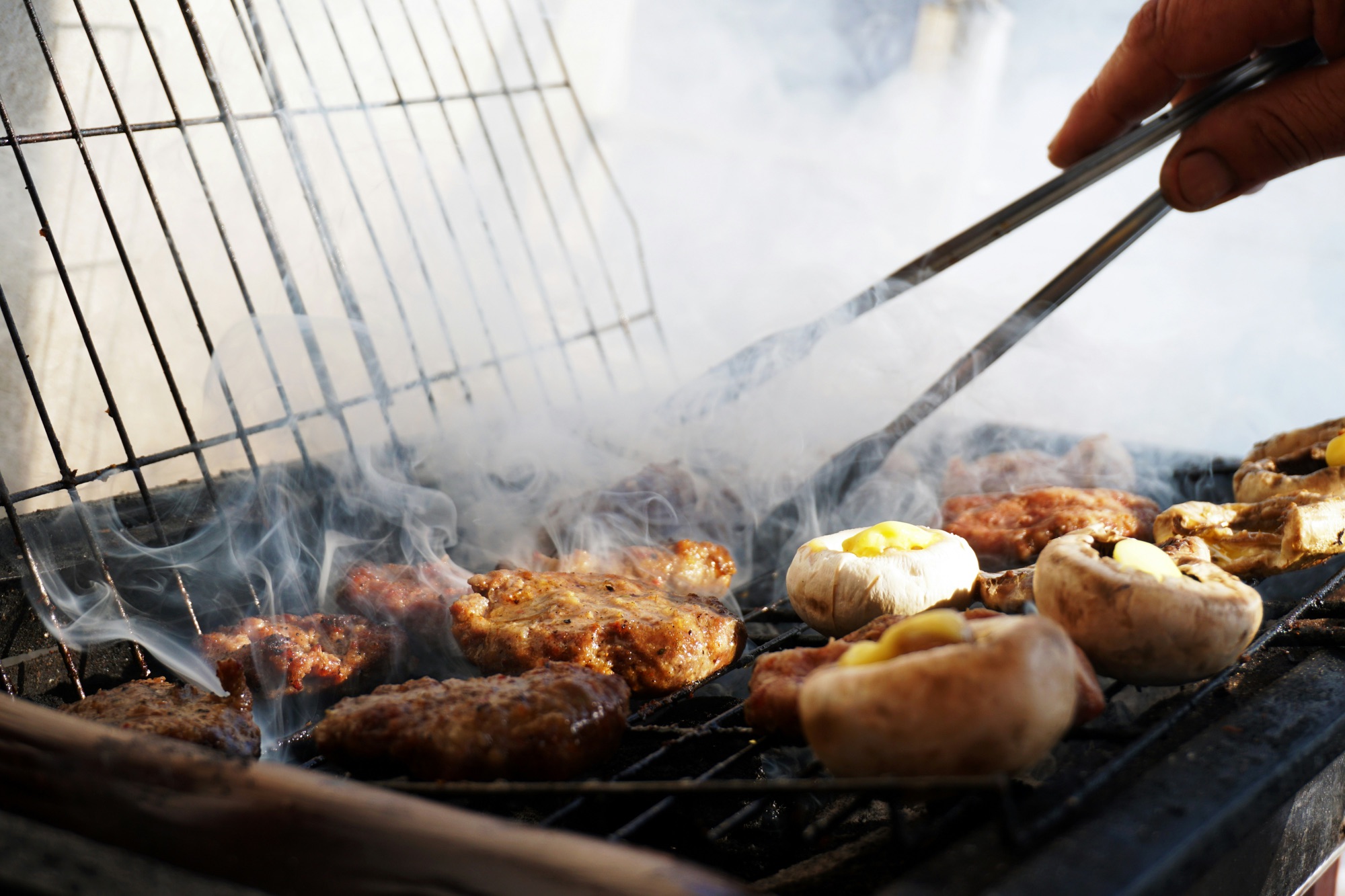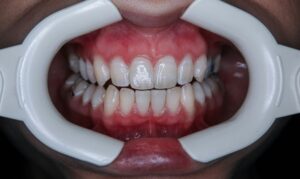Grilling is a beloved cooking method worldwide, often associated with social gatherings, summer barbecues, and the mouthwatering aroma of sizzling meat. While grilled foods are flavorful and satisfying, concerns have emerged about whether grilled meats may increase the risk of cancer. These concerns arise from the formation of certain carcinogenic compounds during the grilling process, particularly when meat is cooked at high temperatures or over an open flame. Specifically, compounds known as heterocyclic amines (HCAs) and polycyclic aromatic hydrocarbons (PAHs) are produced during grilling, and both have been linked to cancer in animal studies.
This article explores the scientific evidence surrounding the potential cancer risks of grilled meats, the chemical processes involved, and practical tips for minimizing these risks. We’ll also discuss how to enjoy grilling safely without sacrificing flavor.
What Happens When You Grill Meat?
When meat is grilled, it is exposed to high temperatures—sometimes exceeding 500°F (260°C)—which causes significant chemical reactions. The primary concerns arise when muscle meats, such as beef, pork, poultry, and fish, are cooked over direct heat or open flames. The combination of high heat and cooking fat produces carcinogenic compounds like HCAs and PAHs. These substances form when the protein, fat, and muscle fibers in meat react to the intense heat, especially when the meat becomes charred or blackened.
1. Heterocyclic Amines (HCAs)
HCAs are chemicals that form when amino acids (the building blocks of protein), sugars, and creatine (a substance found in muscle tissue) react at high temperatures. HCAs are more likely to form when meats are cooked at temperatures above 300°F (150°C), which happens during grilling, frying, and broiling.
How HCAs Form
HCAs develop primarily in the charred or well-done parts of meat, as the chemical reactions intensify with higher heat exposure. This is particularly noticeable when meat is grilled or cooked until it has a crispy or blackened exterior. The longer the meat remains on the grill and the higher the temperature, the more HCAs accumulate.
Types of HCAs
There are multiple types of HCAs, but the ones most commonly studied for their carcinogenic potential include:
- PhIP (2-amino-1-methyl-6-phenylimidazo[4,5-b]pyridine): One of the most abundant HCAs in cooked meats, PhIP has been linked to breast, colon, and prostate cancers in animal studies.
- MeIQx (2-amino-3,8-dimethylimidazo[4,5-f]quinoxaline) and DiMeIQx (2-amino-3,4,8-trimethylimidazo[4,5-f]quinoxaline): These HCAs have been associated with cancers of the gastrointestinal tract and liver in laboratory research.
Health Risks
Laboratory studies have found that HCAs can cause mutations in DNA, leading to the development of tumors in animals. Long-term exposure to high levels of HCAs has been linked to an increased risk of cancers such as:
- Colorectal cancer
- Pancreatic cancer
- Breast cancer
- Prostate cancer
Although the link between HCAs and cancer in humans is less conclusive than in animals, there is growing evidence to suggest that a high intake of well-done or charred meats may increase cancer risk. Some epidemiological studies (studies that look at patterns and causes of health issues in populations) have shown a correlation between the frequent consumption of grilled or barbecued meats and a higher risk of developing cancers of the digestive system, particularly colorectal cancer.
2. Polycyclic Aromatic Hydrocarbons (PAHs)
PAHs are another class of chemicals formed during the grilling process, particularly when fat and juices from the meat drip onto the open flames or hot coals, causing smoke. As the smoke rises, it can coat the surface of the meat, and the PAHs adhere to the meat. PAHs can also form directly on the meat’s surface when it is exposed to intense heat and smoke for extended periods.
How PAHs Form
PAHs are produced during the combustion of organic substances, such as the fat that drips onto the grill. The smoke generated by burning fat is laden with PAHs, which then deposit onto the meat. Charred sections of meat contain the highest concentrations of PAHs. This process occurs more frequently when the flames flare up due to dripping fat, creating additional PAHs that settle on the meat’s surface.
Health Risks
Like HCAs, PAHs have been shown to be mutagenic and carcinogenic in animal studies. PAHs have been linked to the development of:
- Lung cancer
- Stomach cancer
- Esophageal cancer
Human studies on the direct effects of dietary PAHs are less definitive, but environmental exposure to PAHs—such as from air pollution or occupational hazards—has been strongly linked to various cancers. The concern with grilled meats is that regular, long-term exposure to high levels of PAHs, especially from charred or smoked meats, could potentially increase the risk of cancer in humans.
3. Advanced Glycation End Products (AGEs)
Another set of harmful compounds produced during grilling is advanced glycation end products (AGEs). AGEs are formed when proteins or fats combine with sugars during high-temperature cooking methods, such as grilling. Over time, AGEs can accumulate in the body and contribute to oxidative stress and inflammation, both of which are implicated in the development of chronic diseases, including cancer.
Health Concerns
AGEs are linked to:
- Increased inflammation: Chronic inflammation is a known risk factor for cancer development, as it can cause DNA damage and inhibit the body’s ability to repair mutated cells.
- Oxidative damage: AGEs contribute to oxidative stress, a condition in which the body has an imbalance between free radicals (damaging molecules) and antioxidants. This imbalance can lead to cell damage and mutations that increase the risk of cancer.
Scientific Evidence on Grilled Meats and Cancer Risk
The relationship between grilled meats and cancer risk has been studied extensively, but much of the research is based on animal models. In these studies, animals are exposed to high doses of HCAs, PAHs, or AGEs over long periods, often leading to tumor development. However, the human body processes these compounds differently, and the actual cancer risk for humans may depend on frequency, quantity, and cooking methods.
Human Studies
Epidemiological studies have suggested that there may be a link between the consumption of well-done or charred meats and certain types of cancer, particularly colorectal cancer. For example:
- A large study conducted by the National Cancer Institute found that individuals who regularly consumed well-done or charred meats had a 50% increased risk of developing colorectal cancer compared to those who ate their meats cooked at lower temperatures or less thoroughly.
- Other studies have found associations between high consumption of grilled or barbecued meats and an increased risk of pancreatic cancer, stomach cancer, and prostate cancer.
However, these studies often rely on self-reported dietary habits, making it challenging to establish a causal relationship. Additionally, other lifestyle factors, such as smoking, alcohol consumption, and physical activity, may influence cancer risk, making it difficult to isolate the effects of grilled meat consumption alone.
Reducing the Risk: How to Grill Safely
While the potential cancer risks associated with grilled meats should be taken seriously, there are many ways to reduce your exposure to HCAs, PAHs, and AGEs without giving up grilling entirely. Here are some practical tips to enjoy grilled meats more safely:
1. Pre-Cook Meats
One effective strategy to reduce the formation of HCAs and PAHs is to pre-cook meats in the microwave, oven, or on the stove before finishing them on the grill. This reduces the amount of time the meat spends over direct heat, lowering the production of harmful compounds. Once pre-cooked, you can place the meat on the grill for a short period to achieve the desired flavor and char without prolonged exposure to high temperatures.
2. Marinate Meat
Marinating meat before grilling can significantly reduce the formation of HCAs. Studies have shown that marinades containing antioxidant-rich ingredients, such as vinegar, lemon juice, olive oil, and herbs like rosemary or thyme, can reduce HCA formation by up to 90%. These ingredients help form a protective barrier that prevents the meat from becoming overly charred.
3. Grill at Lower Temperatures
Avoid cooking meat over excessively high heat. Instead of placing the meat directly over the flames, use indirect heat or cook the meat at a lower temperature for a longer period. This reduces the chance of creating charred or blackened sections, which are the most concentrated sources of HCAs and PAHs.
4. Flip Meat Frequently
Frequent flipping of the meat can help prevent one side from becoming too charred or overcooked. Constant movement prevents the buildup of HCAs on the surface of the meat and reduces the overall exposure to intense heat.
5. Trim Fat to Avoid Flare-Ups
Since PAHs form when fat drips onto flames and creates smoke, trimming excess fat from meat before grilling can help reduce the risk of flare-ups. Additionally, choose leaner cuts of meat to minimize the amount of fat that can drip onto the heat source.
6. Use Foil or Grill Mats
Placing meat on foil or grill mats can reduce its exposure to direct flames, preventing fat from dripping onto the heat source and reducing the formation of PAHs. These barriers also protect the meat from becoming excessively charred, thus lowering the risk of HCA formation.
7. Avoid Charring or Burning Meat
If parts of the meat become charred or blackened, trim off these sections before eating. The charred areas contain the highest concentrations of carcinogenic compounds, so removing them can reduce your exposure to HCAs and PAHs.
8. Grill Vegetables Instead
Consider grilling vegetables or fruits instead of meat. Vegetables do not form HCAs or PAHs when grilled, making them a healthier and safer option. Adding grilled vegetables to your meal can provide a delicious and nutritious alternative to heavily grilled meats.
Conclusion: Should You Be Concerned About Grilled Meats?
While grilled meats can produce carcinogenic compounds like HCAs and PAHs, the overall cancer risk depends on factors such as how often you eat grilled meats, how they are prepared, and the cooking techniques you use. The scientific evidence suggests that frequent consumption of heavily charred or well-done meats could increase the risk of certain cancers, particularly colorectal cancer. However, this risk can be mitigated through safer grilling practices, such as marinating, pre-cooking, grilling at lower temperatures, and avoiding charring.
Grilled meats can still be enjoyed in moderation, especially if you take steps to reduce the formation of carcinogens. Incorporating more vegetables into your grilling routine, using leaner meats, and following safe grilling techniques will allow you to enjoy the flavors of grilled food while minimizing potential health risks.




